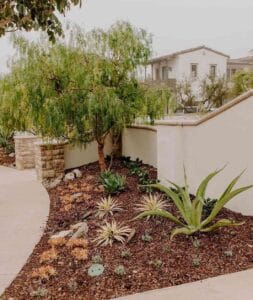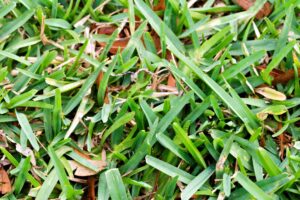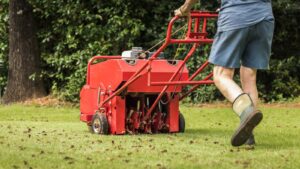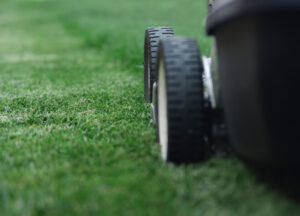BY DANIELA GIRALDO – APRIL 20, 2024
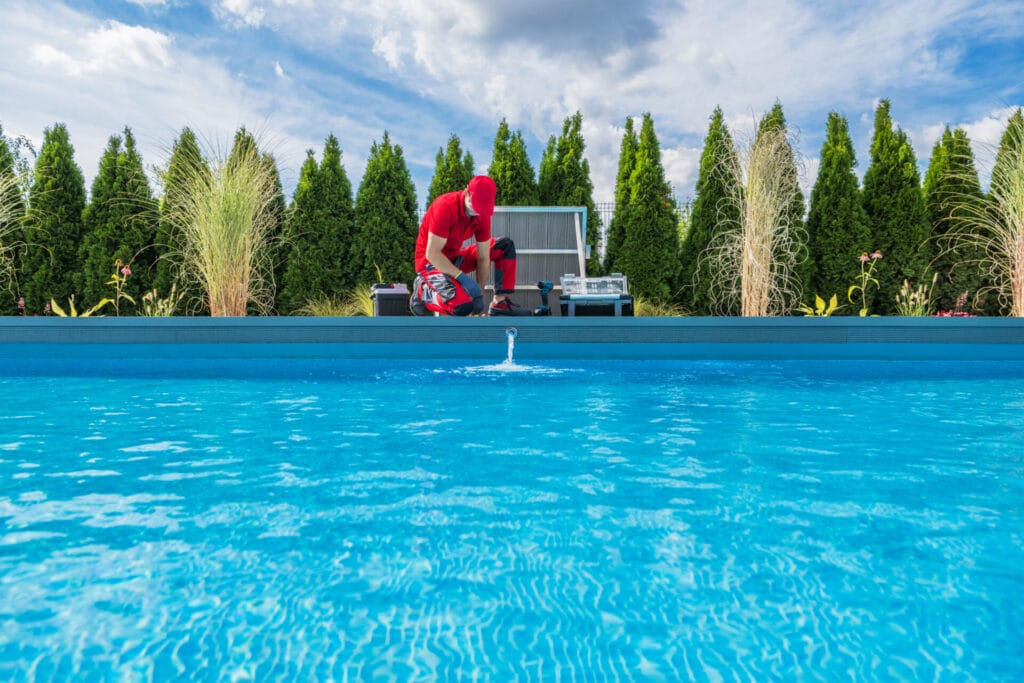
Owning a pool is like having a personal oasis right in your backyard, offering endless hours of relaxation and fun. However, to keep your pool pristine and inviting, regular maintenance is essential. In this comprehensive guide, we’ll walk you through everything you need to know about pool maintenance, from basic cleaning routines to troubleshooting common issues. Whether you’re a new pool owner or a seasoned pro, these tips will help you keep your pool sparkling year-round.
Before diving into maintenance routines, it’s crucial to understand the key components of your pool. These typically include the pool shell, filtration system, pump, skimmer, and chemical feeder. Familiarize yourself with each part and its function to better grasp the maintenance process.
Consistency is key when it comes to pool maintenance. Develop a regular schedule that includes tasks such as skimming debris, vacuuming, testing water chemistry, and inspecting equipment. Depending on factors like pool usage and weather conditions, you may need to adjust your schedule accordingly.
Regular cleaning is essential for keeping your pool water crystal clear. Skim the surface daily to remove leaves, insects, and other debris. Use a pool vacuum to clean the bottom and sides of the pool, paying special attention to areas with poor circulation. Additionally, brush the walls and tiles to prevent algae buildup.
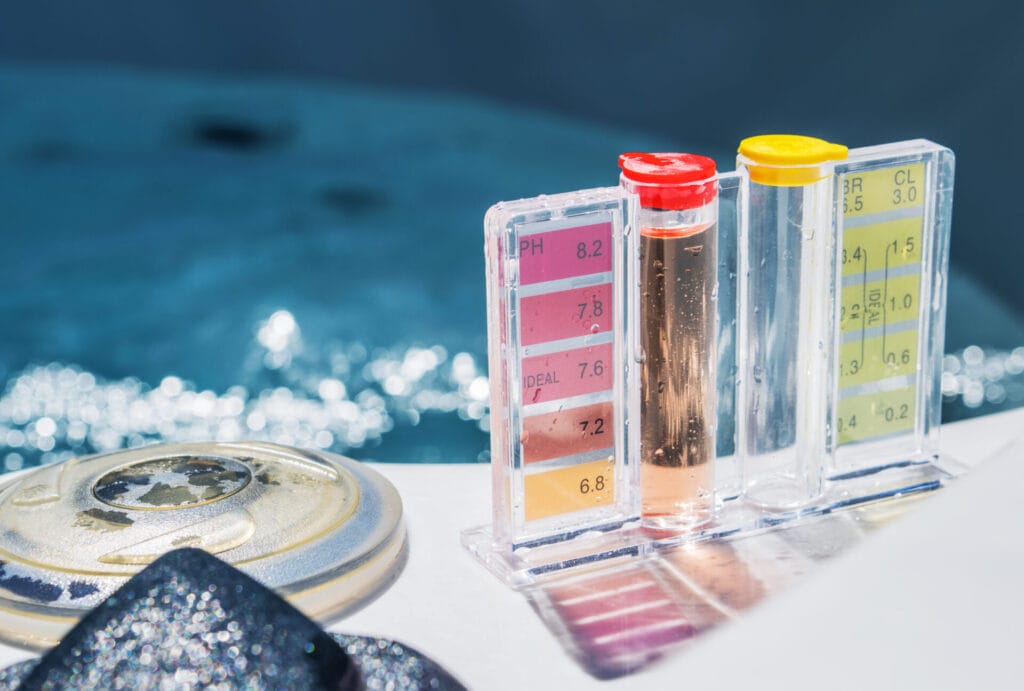
Maintaining proper water chemistry is essential for ensuring the health and safety of your pool. One of the most critical aspects of water chemistry is pH level. pH measures the acidity or alkalinity of the water on a scale from 0 to 14, with 7 being neutral. For optimal pool maintenance, it’s crucial to maintain the pH within a specific range, typically between 7.2 and 7.6. Here’s how to achieve it:
Achieving the Right pH Level:
Factors Affecting pH: Several factors can influence the pH of pool water, including:
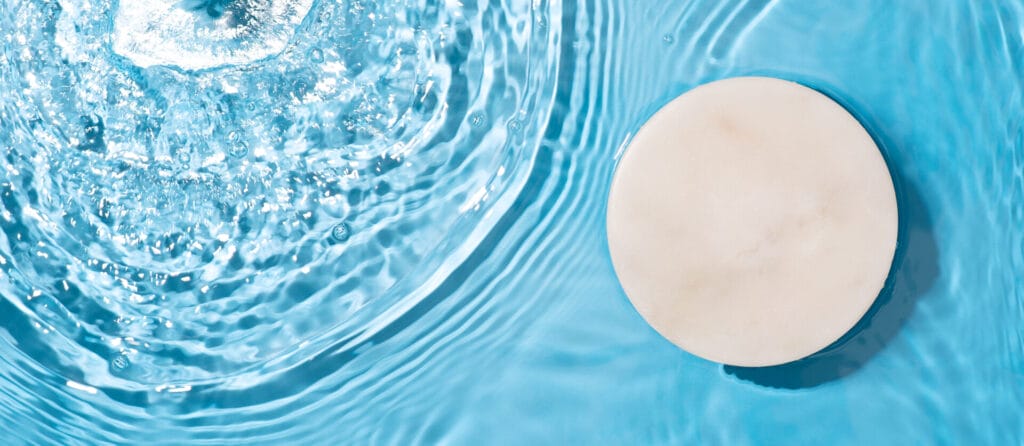
Chlorine is the workhorse of pool sanitation, effectively killing bacteria, viruses, and algae to keep your pool water safe and clear. Maintaining the appropriate chlorine level is crucial for ensuring water quality and swimmer safety. Here’s what you need to know about adding chlorine to your pool:
Testing Chlorine Levels: Regularly test the chlorine level in your pool using a reliable test kit. The ideal chlorine level for most pools is between 1.0 and 3.0 parts per million (ppm). This range provides effective sanitation without causing irritation to swimmers’ skin and eyes.
Adding Chlorine: There are several options for adding chlorine to your pool:
Calculating Chlorine Dosage: The amount of chlorine needed to maintain the desired level in your pool depends on several factors, including pool size, water temperature, and bather load. Use a chlorine dosage calculator or follow manufacturer recommendations to determine the appropriate amount of chlorine to add.
Avoid Overchlorination: Adding too much chlorine to your pool can have negative consequences, including skin and eye irritation, bleaching of swimsuits and pool liners, and corrosion of pool equipment. To prevent overchlorination, always follow manufacturer instructions and never exceed recommended dosage rates.
Shock Treatment: Periodically, you may need to perform a shock treatment to boost chlorine levels and eliminate contaminants like algae and organic matter. Follow label instructions carefully when performing a shock treatment, and be sure to test and balance the water afterward.
Consider Stabilizer (Cyanuric Acid): Stabilizer, also known as cyanuric acid, helps protect chlorine from degradation by sunlight, prolonging its effectiveness. If your pool is exposed to direct sunlight, consider adding stabilizer to help maintain chlorine levels.
Regular Maintenance: Maintaining proper chlorine levels is an ongoing process. Test the water regularly and adjust chlorine dosage as needed to keep levels within the recommended range. Additionally, keep pool water balanced and clean to ensure optimal chlorine effectiveness.

Proper maintenance of your pool equipment is essential for ensuring optimal performance and prolonging its lifespan. Regular inspection and cleaning of the pump, filter, and skimmer are crucial tasks that should be included in your pool maintenance routine. Here’s how to identify signs of damage or wear and effectively clean these vital components:
Pump Inspection and Cleaning: The pump is the heart of your pool’s circulation system, responsible for moving water through the filter and back into the pool. Regular inspection and cleaning of the pump can help prevent issues like clogs, leaks, and motor failure.
Filter Inspection and Cleaning: The filter is responsible for removing dirt, debris, and other contaminants from the pool water, keeping it clean and clear. Regular inspection and cleaning of the filter are essential for maintaining optimal filtration efficiency.
Skimmer Inspection and Cleaning: The skimmer plays a crucial role in removing surface debris like leaves, insects, and oils from the pool water before it reaches the filter. Regular inspection and cleaning of the skimmer are essential for maintaining proper circulation and water clarity.
Properly winterizing your pool is crucial for protecting it during the colder months. Lower the water level, clean and store equipment, and add winterizing chemicals to prevent algae growth and damage. Throughout the off-season, periodically check the pool for debris and maintain proper chemical levels.
By following this detailed guide to pool maintenance, you can ensure that your oasis remains sparkling and inviting year-round. With proper care and attention, your pool will provide endless enjoyment for you, your family, and your friends.
In conclusion, maintaining a pool doesn’t have to be overwhelming. With the right knowledge and consistent effort, you can keep your pool in top condition and enjoy it for years to come.
Share this post:
Check other topics that may help you get more insights for your project:
